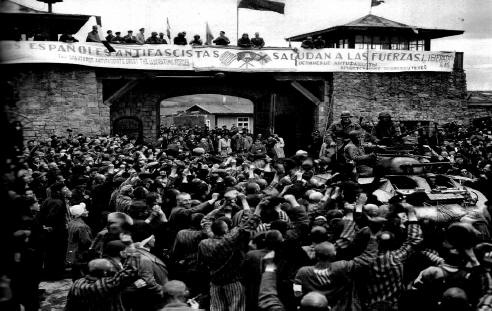![]()
|
Located 5 miles north of the city of Weimar, Germany lies one of the largest concentration camps on German soil. Buchenwald contains 130 satellite camps. It is divide into 3 sections: "Large Camp"- for prisoners with some seniority; "Small Camp"- Where prisoners were kept in quarantine; and "Tent Camp"- for the Polish prisoners. In addition to the section and the satellite camps, there was the administration compound, the SS barracks, and the camp factories. Also around the camp there was four rows of barbed wire. |
|
|
Links
|
After many prisoners arrived the summer of 1937; the SS forced the prisoners to use what little "free time" they had, to carry large stones from the quarry to the camp to build the camp's buildings (the official goal of Buchenwald was the destruction of prisoners by work) |
|
|
Nearly 7,000 men were sent after the terrible night of Kristallnacht. |
| Many prisoners were killed because of starvation, being maltreated, and from being worked to death. Another reason for many of the death was being murdered by the guards. After people were killed they would load up stacks and stacks of bodies into carts, after removing clothes, jewelry, gold teeth, and tattooed skins, for making lamp shades and models of boats. |
 |
|
There have been
many memorial services marking the liberation of the terrible happening at
the Buchenwald concentration camp. Buchenwald researchers spent an decade
looking the archives from the U.S. to Israel and across Germany in an
attempt to identify thousands and thousands of the estimated 56,000
prisoners who had been killed in Buchenwald between the years of 1937 to
1945, but had only been known by their camp assigned numbers. Archivists at
the camp were able to identify 38,049 victims. They then created a memorial
book and entered all the names that they had identified.
|
|
| The Buchenwald Concentration Camp was liberated on April 11, 1945 by soldiers in the Sixth Armored Division of the U.S. Third Army, commanded by General Gorge S. Patton. Before the soldiers arrived the camp had already been taken over by the German Communist prisoners, who had killed some of the guards and forced the rest to escape to the nearby woods. There was approximately 21,000 prisoners at Buchenwald on the day of liberation. | |
|
Keara Lenard Rossville Jr. High Holocaust Project 2007-2008 |
|